Monday, 26 May 2025
Today was about exploring the Naukluft National Park area of the Namib Desert. This ancient desert has been in existence for some 43 million years and its current landscape has remained unchanged for the last two million years. It is considered to be one of Namibia’s most spectacular landmarks, with its large white salt and clay pan surrounded by magnificent red dunes. Some of the dunes reach over 400-metres-high, making them the highest on earth.
We were up before the sun this morning, with Wian seeing us of with our guide for the morning, Sakkie. We drove out the gate of the lodge in an open-sided 4WD vehicle and joined the queue of vehicles waiting to enter the park when it opened at sunrise. We had thought that we were going to climb a massive dune before sunrise and watch the sun come up over the lip of the dune but, with entry to the park not possible until sunrise for visitors staying outside the park, we assumed we were not actually going to witness the sunrise. On the plus side we didn’t have to get up at 4.30am!
The park gates opened at 7.30am this morning and the convoy of 4WD vehicles took off into the park. The vehicles soon spread out with many pulling over for various photo ops along the way. We had stopped for a couple of wildlife photos when Sakkie pulled over to the left hand side of the road and gestured back the way we had come and told us we could take photos of the sunrise. Sure enough, due to the height of the mountains the sun was only just breaching the slope of the mountains behind us. Talk about to-the-minute timing and … we did see the sunrise after all. Spectacular!
Our next stop was at the Dune 1 viewpoint where we were able to look out to the point where the mountains and the sand dunes merge. Sakkie gave us a brief but informative summary of Namibian geography and climate to explain the formation of the Namib Desert. He explained that the footprint of the dunes doesn’t move because they have formed when sand has blown onto the mountains that have been in existence since an earlier time. This anchors the dunes in place and with strong winds blowing almost equally from the east and the west they do not advance east or west with a prevailing wind. The height of the dunes can vary but not their location. Sakkie also demonstrated the high iron content of the dunes by collecting iron particles with a magnet and a tissue. He deposited the particles on my palm and then passed the magnet over the back of my hand making the iron particles dance. And, while we were learning all these facts, the two balloons that were carrying tourists over the desert this morning hovered overhead as they neared their landing point.
We stopped again at the Tsauchab River for a spectacular photo looking back towards Dune 1 before continuing past Dunes 40 and 45. Dune 1 is the first dune along the road into the park and Dunes 40 and 45 are at 40 and 45 kilometres from the gate respectively. These two dunes are also popular to hike but we were headed for the end of the road. Sakkie told us that the naming convention is not very imaginative with some dunes not even numbered let alone named. At the end of the bitumen we were able to make a quick toilet stop before continuing to drive along the river bed for a further five kilometres to reach Big Daddy, Half Big Daddy and Big Mama. We had the option here to climb Big Daddy or Half Big Daddy or take an easier undulating walk into Dead Vlei. Bernie and David set off to tackle the biggest dune, Bernard, Steve, Debbie, Mandy and I, accompanied by Sakkie, headed for Half Big Daddy and Cathy and Marilyn decided on the easiest option. From the dunes we enjoyed spectacular views of the desert and the clay pans from above before descending into Dead Vlei (Dead Valley) which is characterized by the dead camel thorn trees that stand in stark contrast to the white clay pan floor.
After our exercise we were treated to a picnic brunch at the foot of Big Mama. Sakkie organised picnic tables and spread them with colourful tablecloths before laying out a feast for brunch. We had left the lodge this morning without breakfast so we set to work demolishing the spread of fruit juices, cereals, yoghurt and milk, a selection of breads, meat, cheese, tomato and cucumber and hot beverages too!
Sakkie packed up our dirty dishes and we all clambered back into the 4WD. Sakkie pulled over near a sign for Sossusvlei and explained that the word is a combination of words from the indigenous Nama language and Afrikaans. Sossus means ‘gathering place of the water’ and vlei is the Afrikaans word for valley.
After our energetic morning it was time to head out of the park and make our way to Sesriem Canyon. The canyon started forming around 30 million years ago when desert sands buried much of Namibia. Later a climatic change resulted in the formation of rivers which brought limestone, dissolved lime deposits and boulders which were deposited on top of the sandstone. Around two million years ago, the Ice Age caused a drop in the sea level and following this, the increased flow of the Tsauchab River began to cut its way through the landscape to create what is now known as Sesriem Canyon.
Sakkie guided us down into the canyon with a warning that scorpions and spiders live in the holes in the canyon walls, watch where you are putting your hands! Then, as an added bonus, when we reached the bottom of the canyon there was a horned adder. Ugh! I don’t care if it was only around 40 centimetres long it was still a snake and a venomous one at that. So why were people getting within feet of it to take photographs??!! Crazy!
From the canyon we were taken back to the lodge where we enjoyed a short rest before we met Wian at the truck to drive back into the park for a sundowner. Reading our travel documentation before coming away I had read this sundowner thing to mean some sort of special African cocktail. However, what it means is to be in a scenic place as the sun is going down enjoying drinks and nibbles.
Wian drove us to Elim Dune only a few kilometres inside the park. As we drove out of the park this morning and back in again this afternoon the short golden grass on the plains at the base of the dunes reminded us of the paddocks in the Wimmera in Victoria and on the Yorke and Eyre Peninsulas in South Australia after the wheat has been harvested.
At the dune Wian walked us a short distance to the vast nest of a flock of sociable weavers and he explained how the birds build the nest collaboratively. The nest is built with a curved top and many false openings to try to keep it safe from attack by cape cobras. The weavers will also allow a pygmy falcon to live with them as a snake deterrent!
We enjoyed the late afternoon light over the desert landscape as we enjoyed our drinks and nibbles but, unfortunately, we could not stay until the sun officially set because we had to exit the park before the gates were locked at sunset. The only way to have a true sunrise/sunset experience in the park is if you have accommodation that is inside the park. However, we enjoyed a relaxing hour or so getting to know our fellow travellers better over drinks.
We returned to the lodge where we enjoyed another meal on their spectacular outdoor terrace. So much food to choose from it was hard to decide what to have. Although the indoor buffet was designated as ‘starters’ I decided that there were more than enough choices in there to make a main meal although Bernie opted to return to the BBQ for his fare.
Steps: 15,727 (10.40kms)



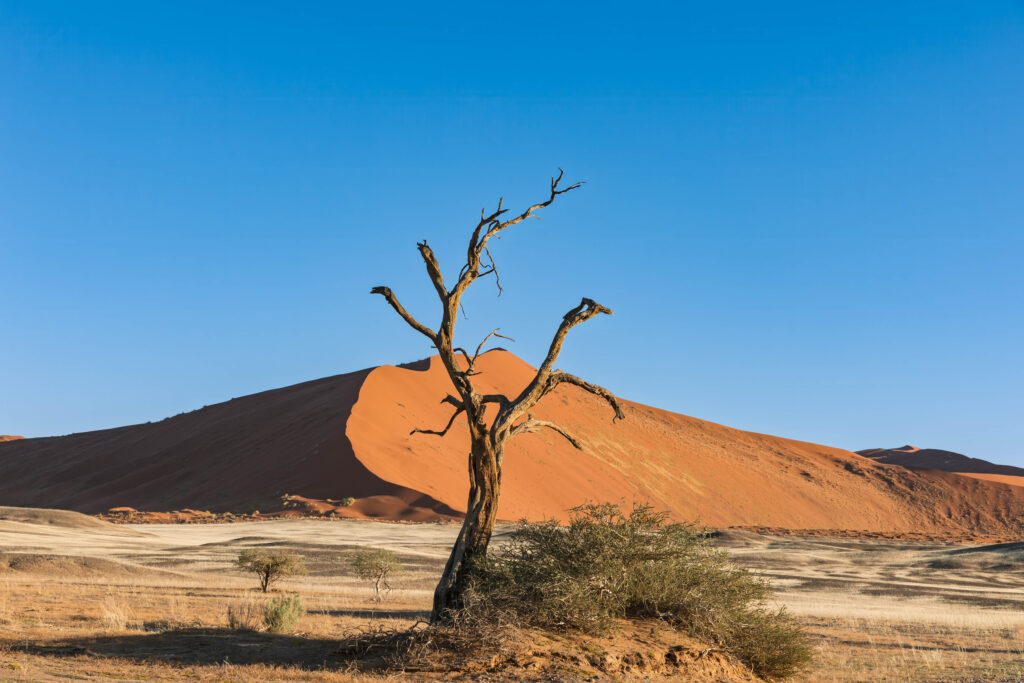
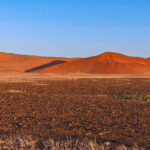
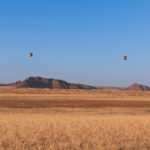
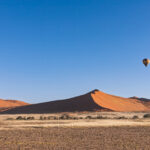
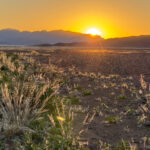
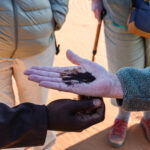
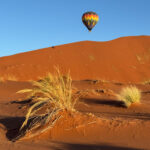
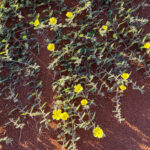
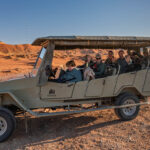
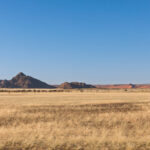
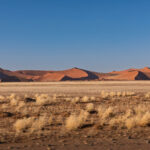
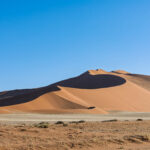
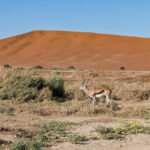
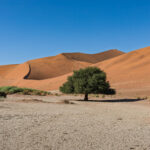
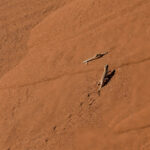
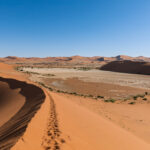
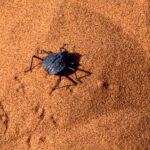
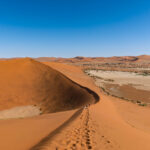
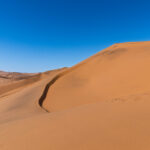
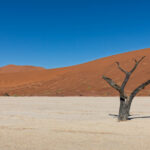
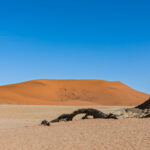
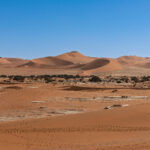
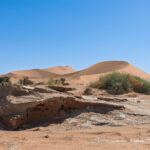
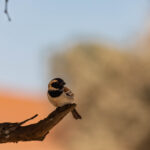
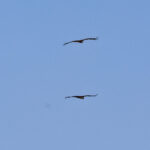
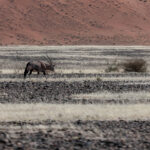
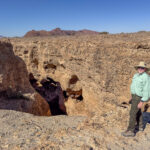
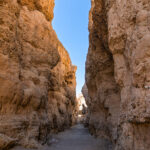
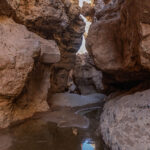
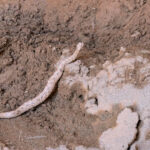
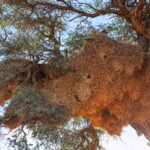
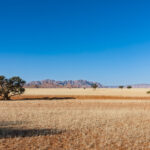
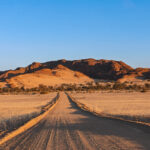
Loving reliving my Namibia trip with you, Tracey – although I didn’t experience a puncture or a venomous snake😱. I too was blown away by the accommodation and food at Sossusvlei Lodge. Unfortunately it was too windy to go up in a balloon when I was there but the small plane flight from Swakopmund over the dunes made up for that disappointment.
Happy birthday to Bernie for the other day🥳.
Thank Penny. Yes the lodge was fantastic, pity about the balloon. We were lucky and it was fairly calm when we were there. Cheers